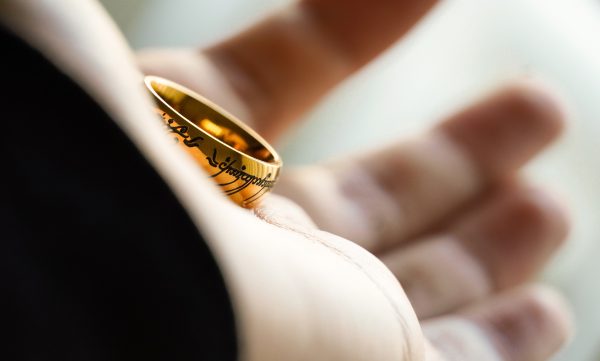The Keepers (1991, directed by Natalya Serebryakova)
Khraniteli, better known by its transliterated title The Keepers (as in “The Keepers of the Ring”) was a two-part miniseries released on Lengingrad TV—the same station that released The Fabulous Journey of Bilbo Baggins (also known as “the Soviet Hobbit”) in 1985. 5TV released both parts of The Keepers on YouTube in 2021, with English subtitles.
Like the Swedish miniseries, The Keepers focuses on events from The Fellowship of the Ring. Part 1 runs 50 minutes from Bilbo’s party to Frodo getting lost in the Barrow-Downs. Part 2 runs 60 minutes, from the hobbits escaping the Barrow-wights to Frodo going with Sam to Mordor.
The presentation is a step up from The Fabulous Journey of Mr. Bilbo Baggins, but not more than a step. The script is fair to middling with a few interesting flourishes: several times characters talk about summer and winter as if trying to develop that into a theme (summer replacing winter as good overcomes evil). Boromir’s confrontation with Frodo is reset in an apple garden, with snake-and-Eve overtones as Boromir helps Frodo pluck an apple. Outside these flourishes, the script feels like a dry reading of the book.
There are also some jarring attempts to give the story a sort of children’s show atmosphere. Tom Bombadil is more or less depicted like a children’s TV host. He has boisterous energy. He never stops smiling. He even talks to the camera in some scenes, like a Russian Mr. Rogers.
The children’s show atmosphere continues with various scenes cutting to a narrator (a bespectacled man dressed like a Quaker) who sits in a room and talks to the audience as he reads aloud from the story. The moments where the camera switches from showing a scene to showing the narrator feels more natural than in The Fabulous Journey of Mr. Bilbo Baggins. However, occasionally the camera will cut to the narrator, and he says nothing—as if creepily watching the audience.
The same better-without-being-good quality applies to everything else. The soundtrack sounds nicer than the music used for the weird dancing scenes in The Fabulous Journey. However, the music isn’t great—mostly electronic tracks that don’t fit the images or tone. The Guardian reports the music was provided by Andrei Romanov of the rock band Avarium. I assume the producers figured that since fantasy imagery and rock music so often went hand in hand during the 1980s, a rock musician was the right person for the project.
The special effects do a good job of making the hobbits tiny compared to Tom Bombadil. However, the effects look terrible when used as rear projection for fantasy backgrounds (Moria’s mines, etc.).Perhaps realizing the limited tech budget, the script omits many big set pieces. No climbing up Weathertop. No river decimating the Black Riders. No Balrog battle (the one scene that really feels odd by its omission, as it means Gandalf disappears and the characters talk as if he died in the fighting).
The one area where The Keepers genuinely excels is its editing. As mentioned earlier regarding the narrator, the camera occasionally intercuts to another scene and then back to the main narrative. The technique doesn’t work with the narrator, but it does in smaller moments. As Gandalf and Bilbo talk about the ring, the camera cuts to close-up footage of Bilbo’s hands fondling the ring. The same happens whenever Frodo is concerned or talking about the ring—creating a little suspense each time. Other times, the camera intercuts from the heroes to the Black Riders. There’s even a moderately clever sequence where Frodo is being transported to Rivendell, and the footage intercuts him, the Black Riders, and a rushing waterfall.
The editing isn’t the best example of slicing and dicing footage. The footage lacks the cinematography or lighting that a director like Tony Scott would use to make their scenes look great even when little was happening. However, the editing does make the scenes look more interesting than they deserve. Special effects matter in fantasy films, but clever editing and visual tricks can make up for many deficiencies.
Come back next week for part 8, where we look at what could have been the best Hobbit adaptation ever made.

